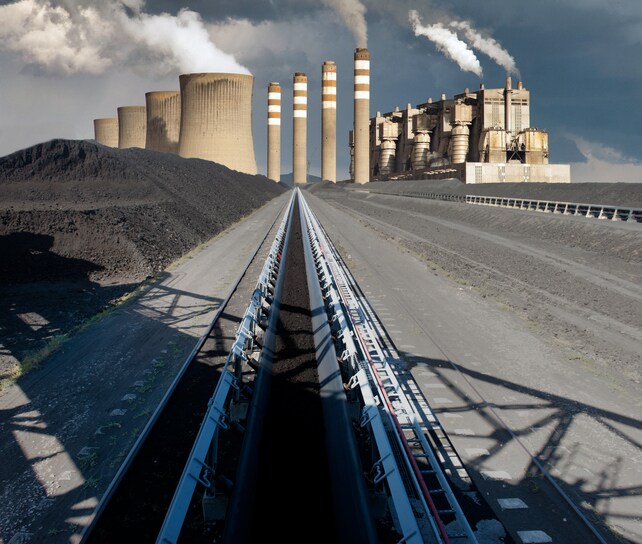 There are 173 coal-fired power plants in India, but the country faces a “crippling power crisis” (according to a Reuters article). A recent article in Turbomachinery International reported that India’s power ministry “predicts an increase in power requirements for coal at 1375 billion units (BU) for 2021-22, and 1650 BU for 2022-2023. This is a great increase from 2020-21, where demand was just 1275 BU.” And a lot of coal is needed to fill that demand.
There are 173 coal-fired power plants in India, but the country faces a “crippling power crisis” (according to a Reuters article). A recent article in Turbomachinery International reported that India’s power ministry “predicts an increase in power requirements for coal at 1375 billion units (BU) for 2021-22, and 1650 BU for 2022-2023. This is a great increase from 2020-21, where demand was just 1275 BU.” And a lot of coal is needed to fill that demand.
As part of its Energy Education information, the University of Calgary reported that:
“Coal plants require enormous amounts of coal. Shockingly: a 1000 MWe coal plant uses 9000 tonnes of coal per day, equivalent to an entire train load (90 cars with 100 tonnes in each!). The amount of coal used during a full year would then require 365 trains, and if each is 3 km long then a single train carrying all of this coal would need to be about 1100 km long; about the same distance as driving from Calgary AB to Victoria BC. If this train were to pass by your house at 40 kilometers per hour, it would take more than a day to pass!”
Unfortunately, India has faced limited reserves of coal, regular power grid disruptions, rolling blackouts, and widespread outages – while still experiencing an increasing demand.
As a result, the government is seeking ways to address the issue, including more investments in nuclear power, natural gas, and renewable resources like wind energy. However, since the article notes that India stands as the world’s second-largest coal consumer and producer, it will take some time for India to diversify its energy mix.
In the meantime, India can take some steps to help ensure their coal-fired power generation plants are operating at optimal levels.
First, let’s discuss the coal itself.
Coal exists in various forms including lignite, sub-bituminous, bituminous, and anthracite. Each contains varying amounts of hydrogen, oxygen, nitrogen, sulfur, and carbon, and as a result they have different combustion properties. The efficiency and cost of power generation operation is directly tied to the fuel being used.
Online elemental coal analyzers and blending technology can measure the composition of coal in real-time and proactively address process variations to ensure more consistent coal blends. The latest analyzers use either Prompt Gamma Neutron Activation (PGNAA) or Pulsed Fast Thermal Neutron Activation (PFTNA) technology to help provide coal producers with accurate, reliable data to control coal blends and ensure on-spec batches.
We’ve discussed the processes that can help maximize the use of resources, enable optimal blending for precise burn and temperature requirements, and reduce pollutants in our previous article How PowerGen Operations Can Keep In Shape.
There are several other areas where coal-fired power generation operators can address to reduce costs and optimize their plants.
There is raw material handling equipment for each stage of the process, including belt scale systems to monitor the weight of goods received, tramp metal detectors to protect the crusher and other expensive equipment, and conveyor protection switches to stop the conveyor if any unexpected accident happens. There are also specialty process control instruments to ensure precise feeding of process materials, control inventory, and maintain product quality. These technologies can help increase efficiencies.
The structural integrity of pipelines and plant assets is key for safety and for avoiding shutdowns. Material mix-ups in metal production can have profound effects on the final product, so today’s best practice is to analyze 100% of critical materials. Using handheld XRF and LIBS analyzers, operators can perform positive material identification (PMI) to analyze piping material and get results in minutes to help ensure that no incorrect or out of specification metal alloys entered the manufacturing process.
In addition, per regulatory requirements in India, ambient air monitoring must be conducted at mining sites – most often run by coal-fired power generation plants – to help ensure comprehensive compliance and environmental impact control. Continuous Emissions Monitoring Systems (CEMS) monitor Particulate Matter (PM) CEMS and Mercury (Hg) CEMS as well as a broad range of pollutants such as CO₂, Nox, SO₂ and CO. Continuous Ambient Air Quality Monitoring (CAAQMS) monitor ambient air quality on real- time basis.
With all these solutions available, there is one issue that has worsened the power crisis but cannot be addressed with technologies for optimizing the power plant. It’s another crisis in India: Not enough trains to move the coal to the plants.
Learn more about Technologies and Solutions to Improve Coal-Fired Power Generation






Leave a Reply